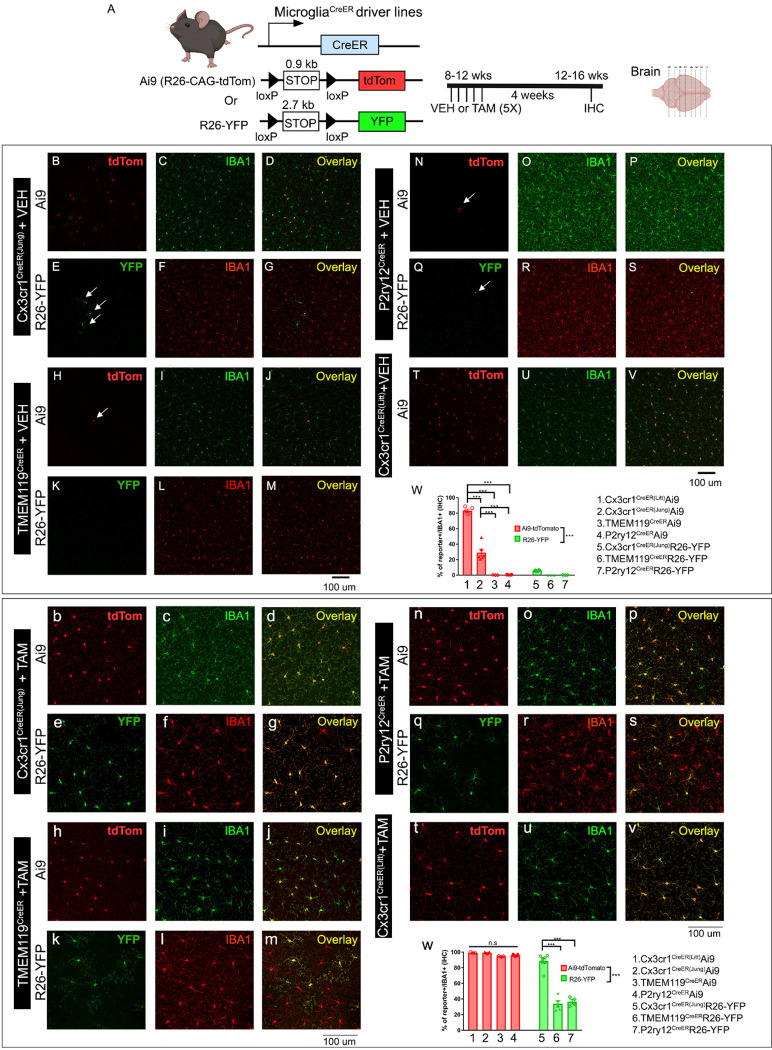Figure 1.
Evaluation of the TAM-independent leakiness and the efficiency of TAM-dependent cre recombination in the four different creER driver lines using either the Ai9 (tdTomato) or R26-YFP reporter mouse lines. The experimental timeline is shown in panel (A). Representative images from each cre driver and reporter line (B-V for VEH treatment and b-v for TAM treatment). Cre driver and the reporter line are indicated on the left side of the panels. Quantification of reporter+ cells in the IBA1+ populations in the brain is shown in panel W (for VEH treatment) and w (for TAM treatment). Representative images are taken from the cortical region which reflects the general and homogenous trend in the whole parenchyma. Each data point represents the average of 1 animal (the average for each animal is obtained by quantifying multiple brain sections at similar anatomical location) and the average for each animal was used as a single data point for statistical analysis. **p < 0.01 and ***p < 0.001, for Two way ANOVA analysis, Tukey post-hoc pair wise analysis. Ai9 vs R26-YFP is significantly different as a factor (p<0.001). Data were combined from 2 independent cohorts of mice. Scale bar: 100 μm. Compared to the two Cx3cr1CreER lines (Littman and Jung), TMEM119CreER and P2ry12CreER show less leakiness in the absence of TAM but a decreased recombination efficiency and mosaic recombination in microglia.

